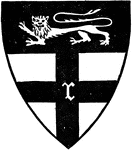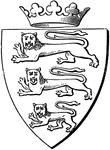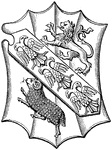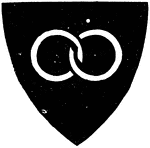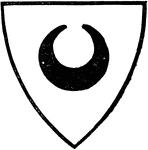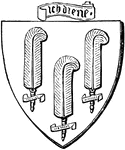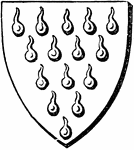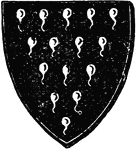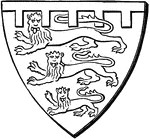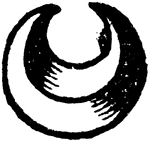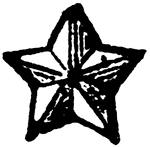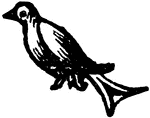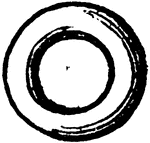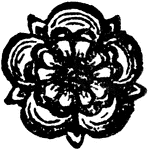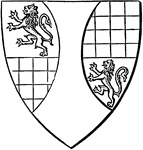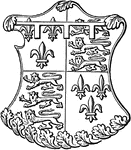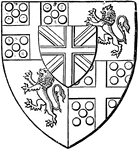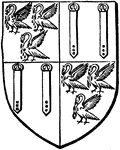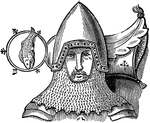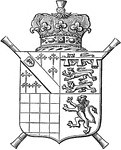
Counter-Componée
"Counter-componée has two rows of squares, with a metal and color alternating."—Aveling,…
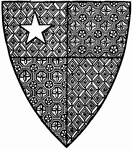
Shield of Robert de Vere
The heraldic shield of Robert de Vere, close advisor of King Richard II of England.

Effigy of Henry, First Duke of Lancaster
An effigy of the first Duke of Lancaster in his coat of arms.

Jupon of Sir Edmund de Thorpe
"Jupon from the Effigy of Sir Edmund de Thorpe, Ashwel-Thorpe Church, Norfolk."—Aveling, 1891
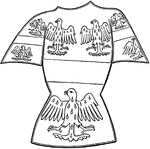
Tabard
A common item of men's clothing during the Middle Ages. It is a short coat with short sleeves or shoulder…
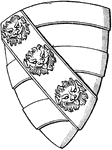
Heraldic Shield with a Lion's Face
The shield of a knight of the time of Edward II. The lion's face is a common charge in heraldry.

Eagle
The heraldic charge of the eagle is one of the earliest charges. It holds the same rank that the lion…
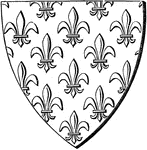
Shield Semée
"When several charges appear in one shield, the number in each row is generally indicated - as, 'three,…
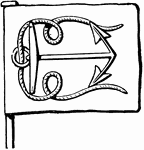
Anchor
"This charge is borne with a cable, and set fesse-wise, by the British Admiralty; but it is usual to…
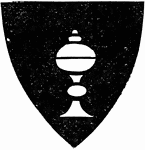
Covered Cup
"An egg-shaped, ornamental, covered cup, with a circular pedestal and base."—Aveling, 1891
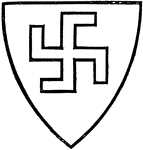
Fylot Shield
"A description of cross, with the ends or extremities bent at right angles."—Avelin, 1891
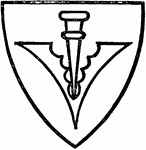
Pheon
"The barbed head of a spear or arrow, engrailed on the inner side. The point of the spear is placed…
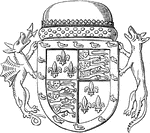
Shield of Jaspar Tudor
"Shield and supporters of Jaspar Tudor, K.G., Earl of Pembroke in 1452 and in 1485 Duke of Bedford;…
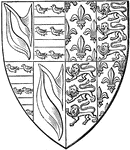
Shield of John de Hastings
"Shield of John de Hastings, K.G., Earl of Pembroke, Quatering De Hastings and De Valence, and impaling…
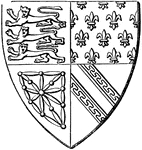
Shield of Queen Isabella
"Quartered shield of arms borne by Isabella, Queen of Edward II."—Aveling, 1891
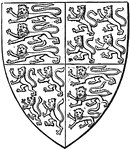
Shield of Queen Philippa
The heraldic shield of Philippa of Hainault, the Queen consort of Edward III of England.
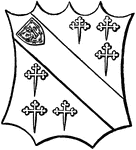
Augmented Shield of Howard
The heraldic shield of the British Howard family, after its augmentation.
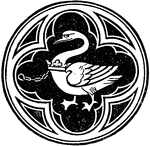
De Bohun Badge
"De Bohun badge. From the central spandrel of the Canopy of the Brass to Alianore de Bohun, Duchess…

Arms of the Heralds' College
The coat of arms for the office that regulates heraldry and granting new armorial bearings.

Seal of Richard, Earl of Arundel
"The Seal of Richard, Earl of Arundel, bears his achievement of arms. The supporters, crest, helm, etc.,…
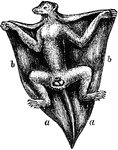
Flying Lemur
A gliding mammal that uses the flaps of extra skin between their legs to glide from higher to lower…
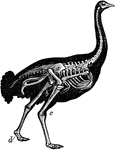
Skeleton of Ostrich
"Shows the powerful legs, small feet, and rudimentary wings of the bird; the obliquity at which the…
Overhand Swimming
"The overhead movement enables the swimmer to throw himself forward on the water, and to move his arms…

Swimming Swan
"Swan, in the act of swimming, the right foot being fully expanded and about to give the effective stroke,…
Millipede
Millipedes are usually cylindrical. The origins of the legs are usually brought very close to the middle…
Mole Cricket
The mole cricket has a smoky brown color above and a yellowish red below. The cricket has a velvety…
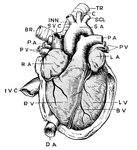
Anatomy of Heart
A complex anatomical view of the heart. RA is the right atrium, or auricle, which receives the deoxygenated…

Universal Joints
A patented device from the turn of the twentieth century. It is used for driving on all four wheels…
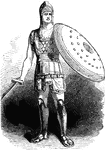
Arms and Armor
The image of a Roman legionnaire. He is equipped with a dense breastplate, a helm, a large round shield,…
